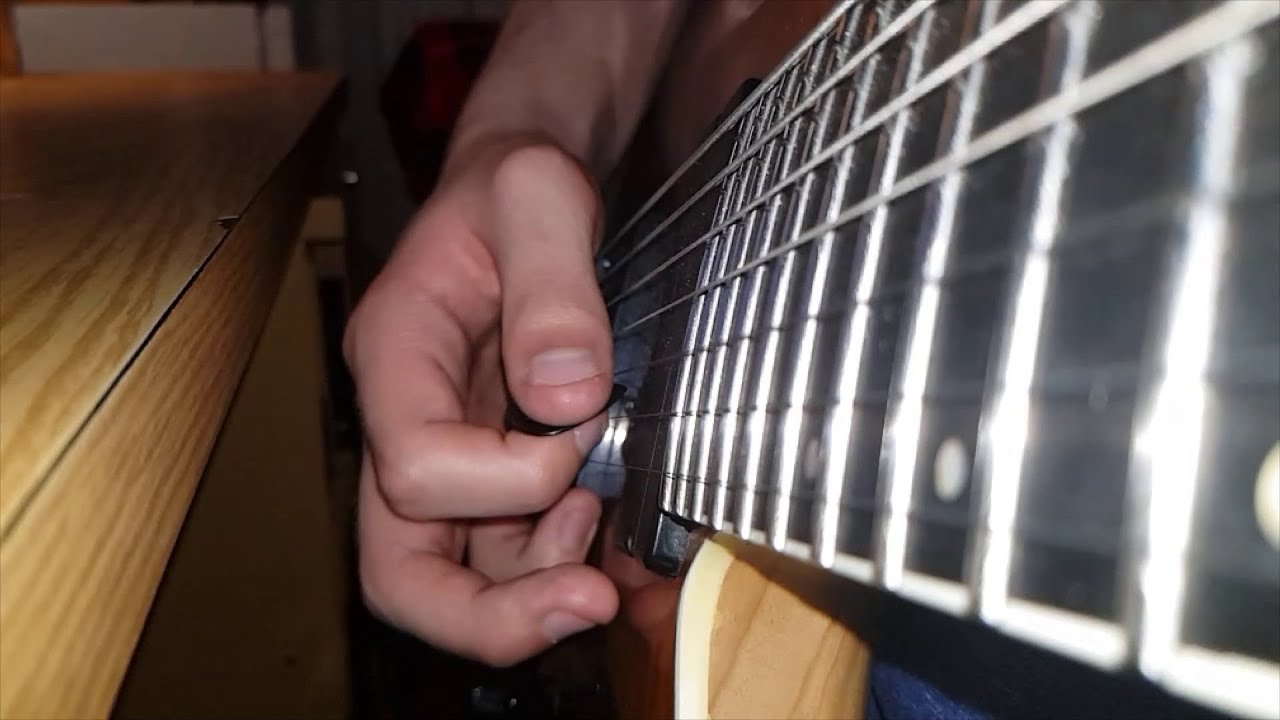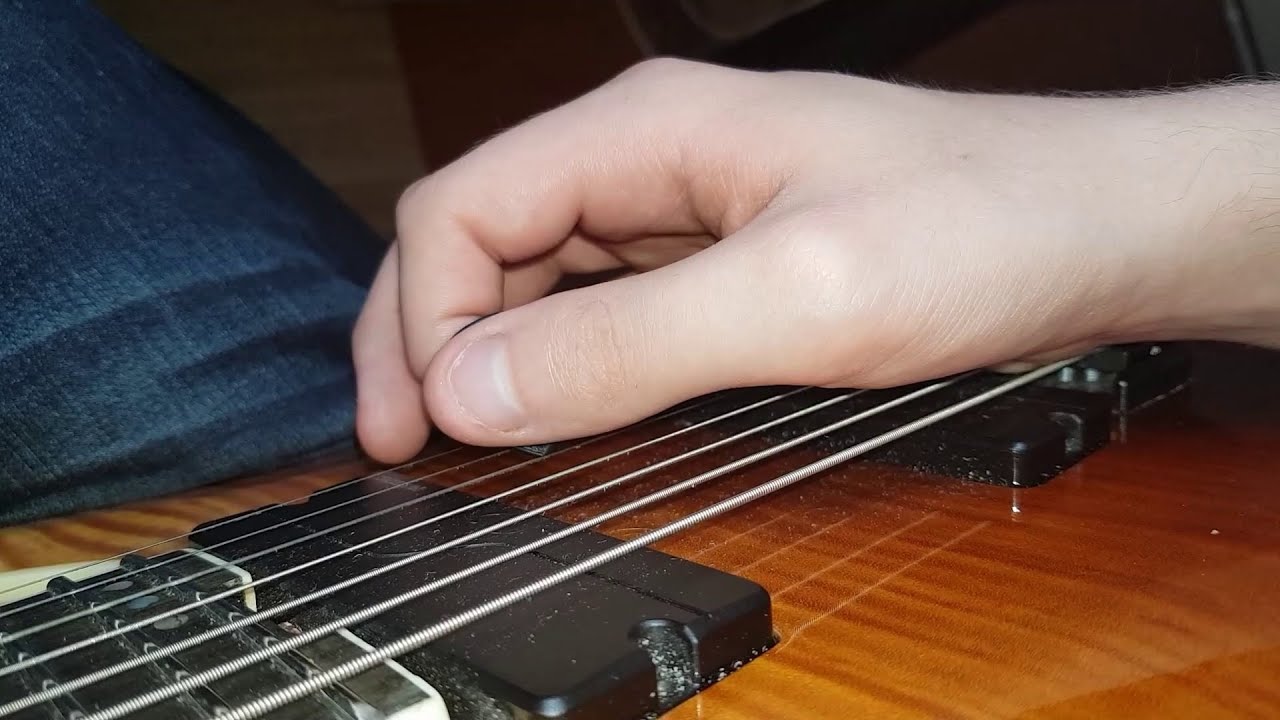Hi Troy and members of the Cracking the Code team. This is my first time posting, but I’ve been a fan of Cracking the Code for a few years now and I really love the scientific approach to analyzing picking styles. Without it, I wouldn’t even be able to describe my issue, but I believe I now have the right terminology and the right analysis to describe my struggles with tremolo picking, which I hope you’ll find interesting if nothing else.
I actually typed up a much longer post with more videos about 2 months ago, but decided to not post because I felt like I was unloading a 7 year long epic. Instead, I decided to take two months to diligently practice a wrist deviation based USX motion, and focus this post entirely on that for now.
So here’s the situation:
I’ve been playing guitar since 2008 when I was 13 years old as a big Thrash Metal fan. I spent a lot of time trying to play Metallica and Megadeth rhythms but could never get close. “Just practice more” everyone said, but it never helped. I remember spending weeks upon weeks and hours a day practicing Disposable Heroes by Metallica, and made zero progress in that time frame. I could never pick anywhere close to fast enough.
About 7 years ago, I decided I needed to focus entirely on alternate picking (or rather, tremolo picking on one fret on one string), and here I am 7 years later still trying. I’ve made… interesting progress, but I’m still a beginner. I’m literally better at drums than I am at guitar and I’ve played drums for less than 5 minutes.
Really, all I want at this point is to surpass the beginner stage of guitar playing. I don’t even remember the last time I tried to learn a new song; all I do is practice tremolo picking and honestly, it’s not fun anymore.
So fast forward to 2 months ago (I’m skipping the long story to save you time), and I’ve been practicing a specific USX motion with wrist deviation, and I’ve forced myself to practice every single day for at least 30 minutes if not longer. Unfortunately, I still can’t do it at any respectable speed. I made some progress on the first two days getting used to the feeling, but that’s where my progress ended, and I’ve made precisely zero progress since.
And to be clear, although I’ve only been practicing this specific technique for 2 months, I’ve spent years on and off practicing palm muted alternate picking using USX as well, as well as some other techniques. I could record them too, but I decided to keep this post on topic. Just know that it’s not like I’ve given up after a measly 2 months. I’ve been at this for 6-7 years.
Here’s me using this technique at a speed I can manage (100bpm), even though it’s not smooth:
(Side note: I recorded this video at 120fps for slow mo, but YouTube won’t play it above 30fps and I’ve given up trying to diagnose it)
To show you what the problem is, I decided to record a POV shot of myself playing while gradually increasing the tempo from 100bpm to 180bpm. I play one bar of 8ths, and then one bar of 16ths, increasing by 5bpm every two bars. It’s not a conventional video angle, but I thought it best captured the problem.
As you can see, my hand bounces quite erratically and I can’t control it at high speeds. This weird vibration issue also affects both of my hands, so I don’t think it’s something I learned to do. Unsurprisingly, I suffer from the infamous string hopping issue, but it was never something I learned to do, it just happens uncontrollably as a result of this bouncing. I was aware of this issue long before I discovered Cracking the Code.
This problem is definitely exaggerated due to string resistance as well. When picking through the string, the pushback of the string pushes my hand upwards due to basic physics, and this sets off the bouncing because I have to slightly tense my hand to keep it down. I can control this at slower speeds, but it requires a lot of focused thinking and I can’t think fast enough when it gets fast. It’s definitely not an autopilot motion for me. Even at abysmally slow speeds like 60bpm it still requires a lot of focused thinking.
I guess it’s also worth noting that I suffer from social anxiety and get very shaky hands from adrenaline rushes, which is annoying in general. Since I’m just a bedroom warrior, I don’t get anxious while playing guitar, but it might be connected since the shaky motion is identical.
Lastly, my current practice routine changes day to day, but this is an example template I’ve been following for 2 months. When I’m motivated, I sometimes spend a few hours practicing, but this is the daily minimum.
- 5 minutes of warmup
- 5 minutes of sweeping (for fun, why not?)
- 5-10 minutes of trying to play fast (150-170bpm) in 5 note bursts, using this USX technique
- 5-10 minutes of constant picking with no breaks at 80-90bpm, using this USX technique
- 5 minutes of practicing with no pickslant and no escape motion for the purpose of targeting the bouncing problem alone
- 5 minutes of practicing 2WPS with a 10 note 2 string pattern (the Petrucci one) slowly, using this USX technique and a DSX technique I learned previously
I am absolutely open to suggestions if you think I should change something here that would target my issue more directly. So far I’ve made no progress, so I don’t feel attached to this.
Bonus fact: I actually used to be fairly good at downpicking when I was younger. I could just barely keep up with the tempo of Master of Puppets (212 bpm) within probably 2 years of picking up guitar, but I definitely can’t do it anymore since I haven’t practiced downpicking in years.





 I read through this topic as thoroughly as I could; forgive me if I missed something!
I read through this topic as thoroughly as I could; forgive me if I missed something! 
 I think experimenting with something more than just pure wrist deviation could be beneficial!
I think experimenting with something more than just pure wrist deviation could be beneficial!





